From Renaissance rooftops to Sengoku shadows, these 10 entries define Ubisoft’s era‑spanning epic—ranked from great to greatest.
10) Assassin’s Creed Syndicate (2015)
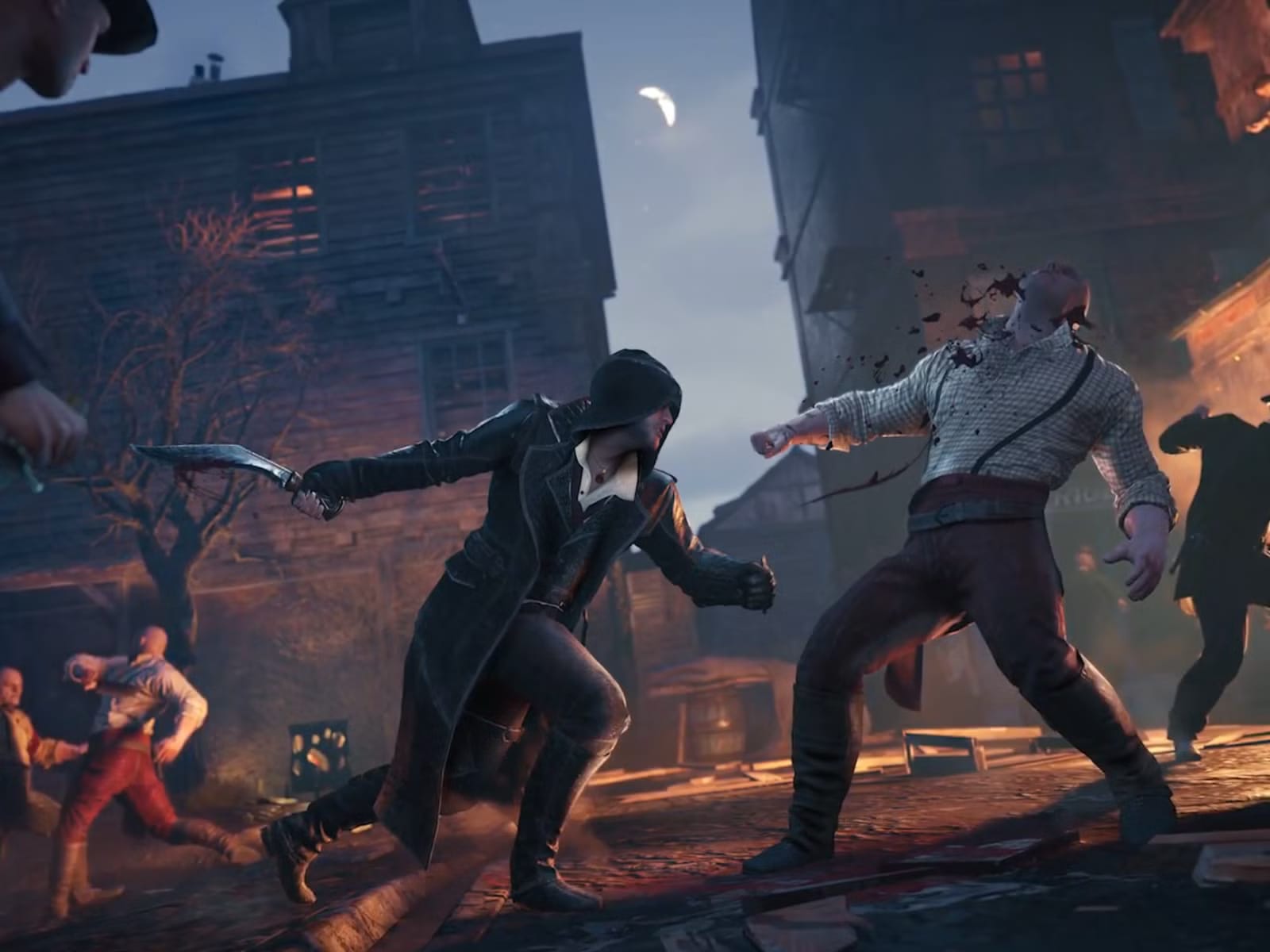
Set amid the grime and grandeur of Victorian London, Syndicate hands you not one hero but two: the brawling Jacob and the surgical Evie Frye. Its London is a busy playground of factories, rooftops, and river docks, stitched together by a wonderfully practical rope launcher that finally made crossing wide boulevards feel as fluid as Renaissance alleys. Moment‑to‑moment, Syndicate is a confident refinement of classic AC stealth and crowd blending, but it also adds smart systemic twists—gang territory takeovers, carriage chases, and dual‑protagonist skill paths that gently encourage different playstyles. The story doesn’t try to reinvent the series so much as steady it after Unity’s turmoil; as a result, it’s one of the most approachable “old‑school” Assassin’s Creeds. If you’re craving cloak‑and‑dagger city sandboxes with crisp traversal, Syndicate remains an under‑sung delight—and a pivot point before the RPG‑leaning reinvention to come.
9) Assassin’s Creed Unity (2014)
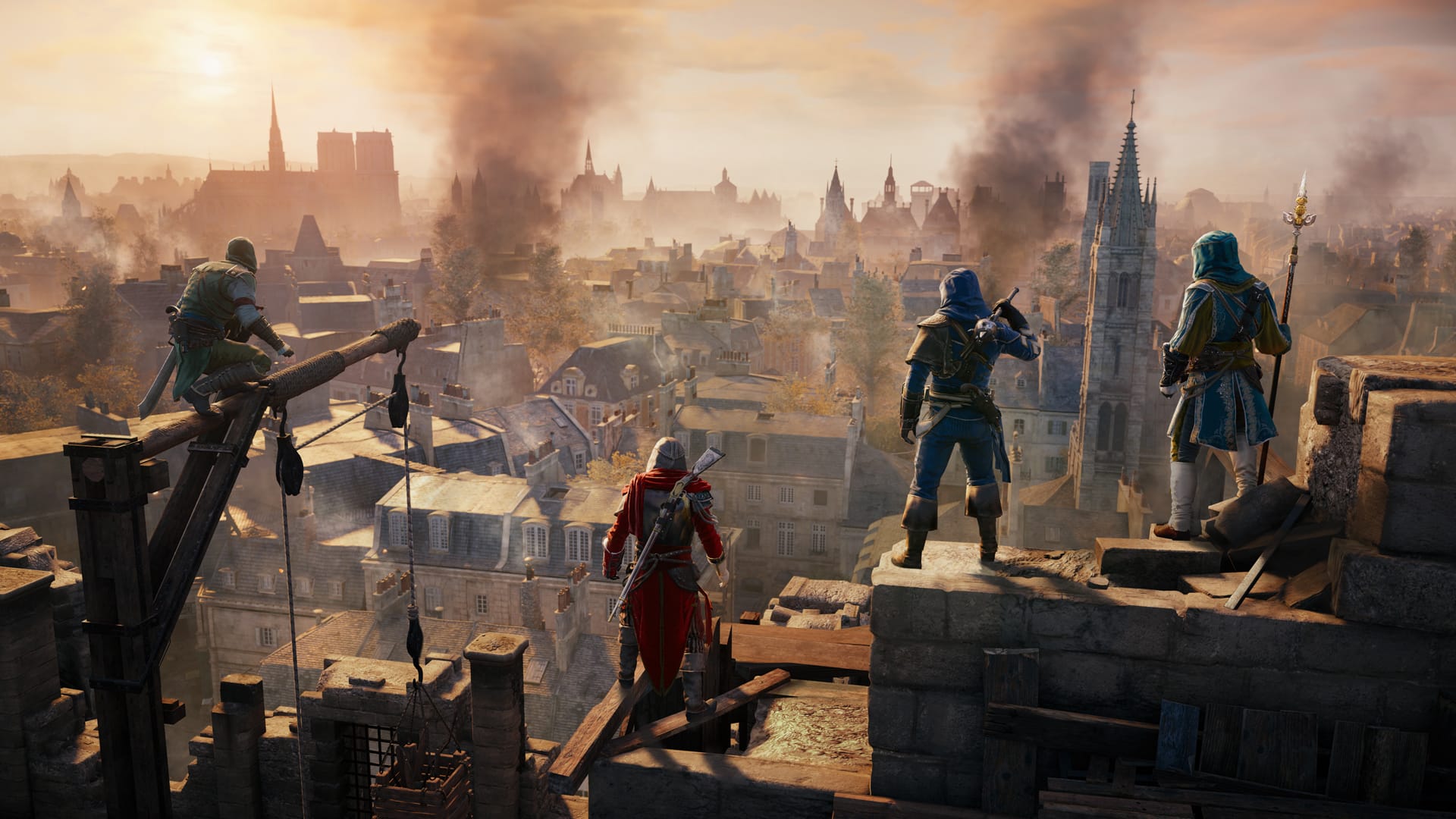
Few games are as ambitious—or as infamous—as Unity. Launched rough, it forced Ubisoft to make Dead Kings free and rethink DLC plans after widespread technical issues. But look past the memes and you’ll find a lavishly realized Paris during the French Revolution, with co‑op missions, dense interiors, and the best pure parkour the series has ever seen. Ubisoft’s crowd tech put teeming mobs on screen, making stealth in public feel genuinely theatrical again, and the city’s verticality rewards patience and route‑planning. In the years since, patches and PC horsepower have let Unity’s strengths shine through: meticulous historical craft, labyrinthine level design, and satisfying rooftop flow. It’s no longer the series’ cautionary tale, but its flawed, fascinating experiment—one that enriches the franchise’s legacy of spectacle and stealth.
8) Assassin’s Creed II (2009)
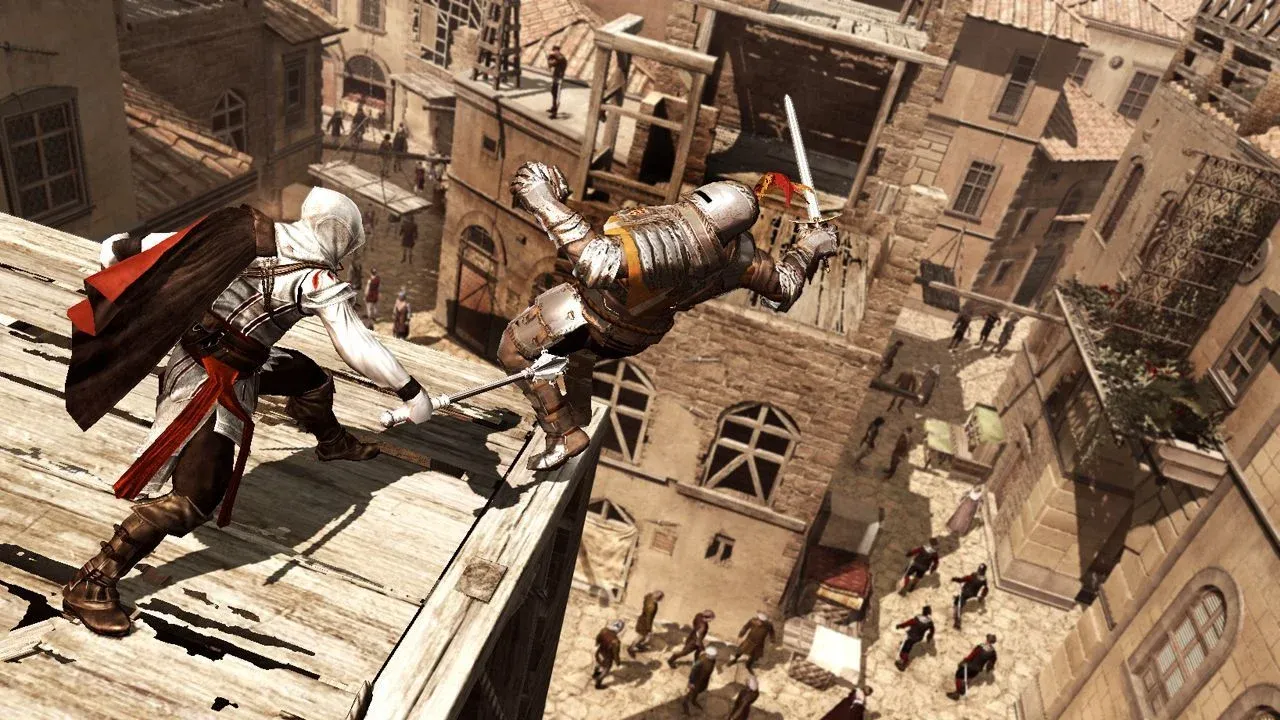
Ezio Auditore’s debut is the moment Assassin’s Creed became a phenomenon. Renaissance Italy—Florence, Venice, and Tuscany—burst to life with social stealth, economic upgrades, and a far more charismatic hero than the original’s stoic Altair. AC II perfected the franchise’s core loop: stalk, study, strike, and vanish into a living crowd. It layered in gadgetry (thanks, Leonardo), smoother free‑running, and a playful, Da Vinci‑tinted tone that made its conspiratorial plot sing. Most importantly, it made you feel like an Assassin long before stat trees and loot tiers ever entered the conversation. Even today, Ezio’s coming‑of‑age blend of revenge and responsibility is the series’ emotional north star, and its city design still makes rooftop navigation feel like a dance. If you want to understand why this brand endured, start here—then watch how later entries iterate on its blueprint.
7) Assassin’s Creed: Brotherhood (2010)
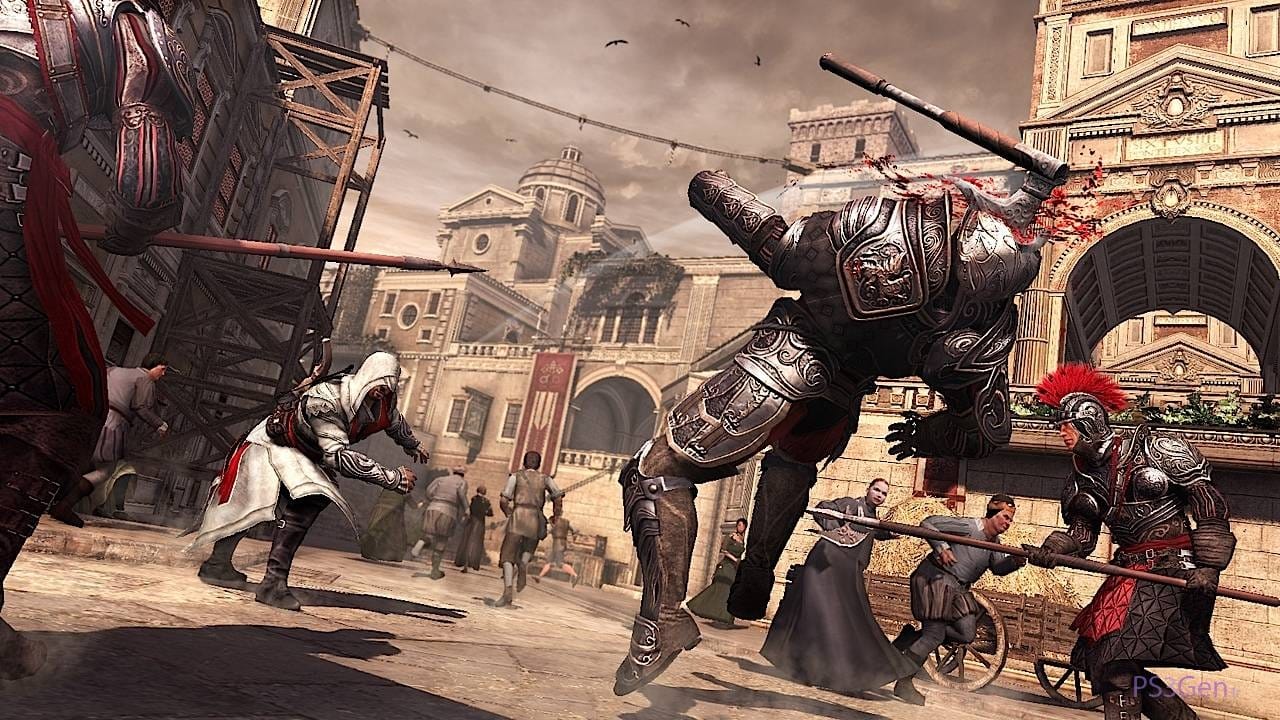
Brotherhood takes Ezio to Rome, then dares him to run it. The “recruit, train, and summon” Assassin system is still a franchise high point, letting you turn a city’s citizens into blades at your command. It’s also the series’ first foray into multiplayer: tense cat‑and‑mouse matches where everyone is both hunter and hunted—a clever translation of social stealth into competitive play. Single‑player streamlining (fast travel hubs, more fluid combat) makes Rome a joy to carve through, and narrative beats with the Borgia family are pulpy and propulsive. Brotherhood didn’t just extend AC II; it codified the series’ obsession with systems that reinforce fantasy—control the city to control the target. Its critical acclaim, awards haul, and enduring fan love confirm it as more than a “2.5”; it’s a pillar of the franchise.
6) Assassin’s Creed Mirage (2023)
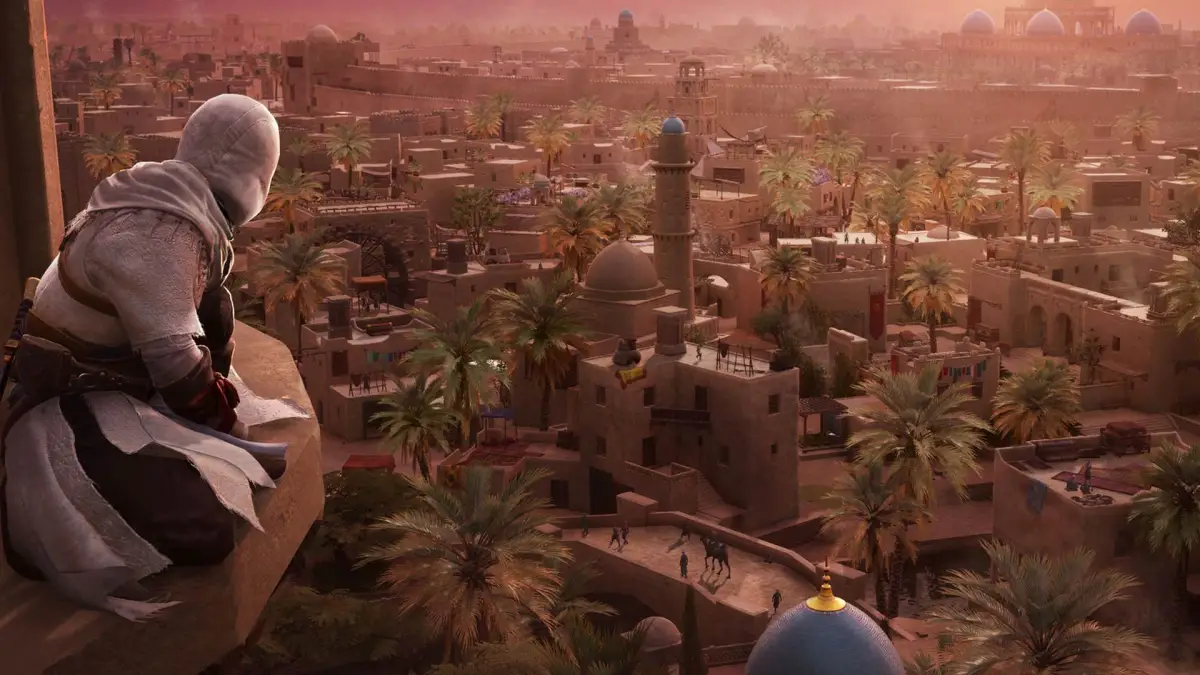
A “back to basics” palette cleanser, Mirage shrinks the map and sharpens the blade. Ninth‑century Baghdad is dense, legible, and tailor‑made for stalking: rooftop lines feel intentional, alleys offer multiple infiltration vectors, and guards respond to misdirection in ways that rekindle the thrill of social stealth. Playing as Basim, a thief turned Hidden One, you trade sprawling RPG sprawl for focused contracts and handcrafted missions. It’s a conscious homage to the series’ classic DNA—eavesdropping routes, disguise‑friendly crowds, and assassination setups that reward patience over power. Critics praised its world design and stealth‑first mentality; if you bounced off the 100‑hour epics, Mirage is your jumping‑back‑in point. Think of it as the franchise reminding itself (and you) that a single, perfect stab can be more satisfying than an endless loot treadmill.
5) Assassin’s Creed IV: Black Flag (2013)
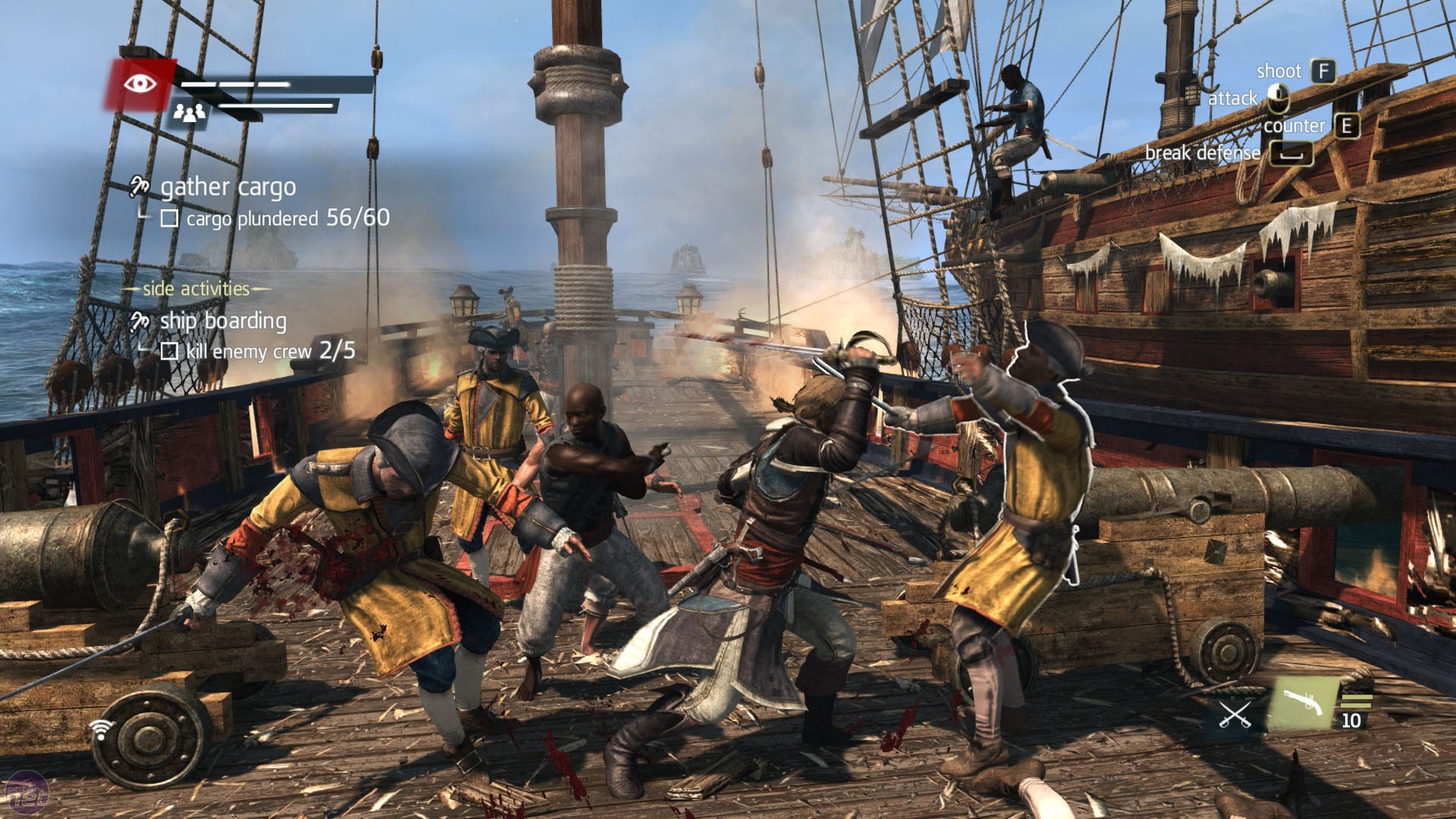
Yo‑ho, and a hidden blade to boot. Black Flag turns the Caribbean into an open‑sea playground and reinvents the series around Edward Kenway’s pirate swagger. Your ship, the Jackdaw, is a character unto itself—upgrade her, sing sea shanties, and hunt treasure as naval combat flows seamlessly into island infiltration. The ocean is both highway and hunting ground, and the freedom it grants—boarding, plundering, diving—pairs beautifully with classic rooftop assassinations in Havana, Nassau, and Kingston. It’s also one of the franchise’s most decorated entries, nabbing major awards and selling over 11 million copies as of 2014, thanks to its irresistible fantasy of piracy with purpose. If Origins and Odyssey built sprawling RPGs, Black Flag built a seafaring sandbox that still feels unmatched for pure wanderlust.
4) Assassin’s Creed Origins (2017)

With Bayek and Aya in Ptolemaic Egypt, Origins reboots the series into a true action‑RPG: hitbox combat, skill trees, loot, and a monumental world that invites you to ride, sail, and spelunk your way through temples and tombs. It’s not just systems, though—the story grounds the literal “origins” of the Brotherhood in grief and justice, giving the hidden blade new weight. Origins also introduced Discovery Tour, a combat‑free educational mode that lets players (and classrooms) roam ancient Egypt through guided historical lessons—one of the most novel uses of a blockbuster game world to date. The result is a generous epic that respects curiosity as much as conquest, and a blueprint for the series’ modern era. If you want the moment Assassin’s Creed became a role‑playing adventure—and a teaching tool—start here.
3) Assassin’s Creed Odyssey (2018)

Ancient Greece is Odyssey’s canvas, and it paints with audacity: dialogue choices, branching quests, romanceable NPCs, mercenary hierarchies, and naval combat reborn with the Adrestia at your command. Playing as Kassandra or Alexios, you weave through myth and history during the Peloponnesian War, toppling the Cult of Kosmos as you decide who your hero becomes. It’s the series at its most RPG: builds matter, decisions ripple, and exploration is king. Commercial success followed, as did recognition—including a BAFTA Best Game nomination and a Performer nomination for Melissanthi Mahut’s Kassandra. Odyssey can sprawl, but its map is full of postcard‑ready islands and lively city‑states that reward purposeful wandering. If you want role‑playing freedom without losing the series’ stealth‑and‑steel spirit, Odyssey is peak “choose your legend.”
2) Assassin’s Creed Valhalla (2020)

As Eivor carves a Viking saga across fractured 9th‑century England, Valhalla leans into settlement building, river raids, and a tapestry of regional story arcs that feel like an anthology of alliances. It’s the culmination of the RPG trilogy’s ideas—more social stealth than Odyssey, more restraint than Origins, and a smarter cadence of exploration versus story. The result resonated: Valhalla set franchise day‑one revenue records, became the fifth best‑selling game of 2020 in the U.S., and surpassed $1 billion in revenue by early 2022, cementing it as one of Ubisoft’s most profitable titles ever. Beyond the numbers, it’s a world of mead‑soaked feasts, mythic detours, and beautiful, brooding countryside—at once intimate and enormous. If you want the biggest, boldest iteration of AC’s RPG era without losing the series’ soul, Valhalla is your longhouse.
1) Assassin’s Creed Shadows (2025)

At last: feudal Japan. Shadows fulfills a decade of fan wish‑lists with a dual‑protagonist design that truly plays differently: Naoe, the Iga shinobi, turns light and shadow into weapons as she slips through forts with bamboo‑breath patience; Yasuke, the African samurai of historical legend, meets conflict head‑on with katana, naginata, and teppō. Dynamic seasons reshape infiltration—winter freezes ponds you could hide in during summer—and a reworked investigation loop makes finding targets feel earned rather than waypointed. It’s the series’ tightest marriage of stealth fantasy and historical spectacle since AC II, re‑centered around observation, preparation, and immaculate timing. Released March 20, 2025 on PC and consoles (with a Nintendo Switch 2 version in December), Shadows arrives as both culmination and fresh start: the elegance of the old, the fidelity of the new, and a setting worthy of the franchise’s name. This is Assassin’s Creed at its most confident.





